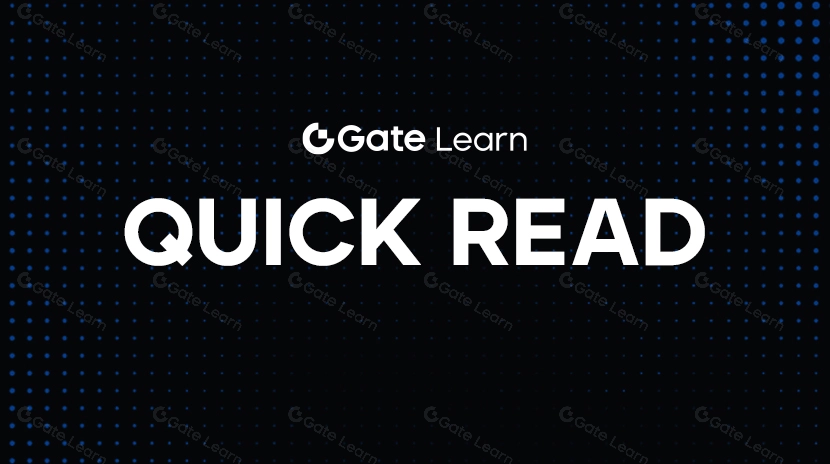Qu'est-ce que Bedrock (BR) : Le Premier Protocole de Re-staking de Liquidité Multi-Actifs
1. Introduction
Avec le développement continu de la technologie blockchain, l'écosystème multi-chaîne devient progressivement une tendance de l'industrie, le Liquidité staking joue un rôle clé dans la libération de la liquidité des actifs mis en jeu, et il joue un rôle important dans un environnement multi-chaîne.
Bedrock est le premier protocole de réapprovisionnement en liquidité au monde qui prend en charge plusieurs actifs, et a lancé le premier produit de réapprovisionnement en Bitcoin, uniBTC. En tant qu'actif leader en matière de réapprovisionnement en liquidité BTC, uniBTC permet aux utilisateurs de gagner des récompenses de réapprovisionnement tout en maintenant la liquidité des actifs, ouvrant de nouvelles opportunités de revenus sur le marché du Bitcoin de plusieurs billions de dollars. Basé sur la solution innovante BTCFi2.0, Bedrock a redéfini le positionnement de la valeur du Bitcoin dans l'écosystème DeFi et a mis en œuvre le réapprovisionnement en liquidité d'actifs tels que BTC, ETH et DePIN sur plus de 12 blockchains grand public.

2. Analyse complète de Bedrock
2.1 Examen de l'historique du développement
Depuis sa création, Bedrock DAO a progressivement réalisé des avancées importantes dans le domaine du jalonnement de liquidités multi-chaînes, tracant un chemin d'innovation et de percées à des points clés de son développement.
Aux premiers stades du projet, l'équipe principale de Bedrock DAO, avec une vision aiguisée des tendances de développement de la technologie blockchain, a identifié avec précision la forte demande de liquidité de mise en jeu dans un environnement multi-chaînes, et a commencé à construire l'architecture technique sous-jacente. Ils ont mené des recherches approfondies sur les caractéristiques et les mécanismes de consensus des différentes blockchains, s'engageant à développer une solution de mise en jeu de liquidité compatible avec plusieurs chaînes, posant ainsi des bases techniques solides pour le développement futur.
Par la suite, Bedrock DAO a réussi à finaliser une importante levée de fonds, menée par OKX Ventures, LongHash Ventures et Comma3 Ventures, avec la participation de Waterdrip Capital, Lbank Labs, Amber Group, ArcheFund, Whale Ground, et des investisseurs providentiels, dont Fisher Yu, cofondateur de Babylon. Cette levée de fonds a non seulement injecté des fonds suffisants dans le projet, mais a également obtenu la reconnaissance de nombreuses institutions et investisseurs bien connus de l'industrie, renforçant la visibilité et l'influence de Bedrock DAO sur le marché et apportant un soutien solide à sa recherche technologique et à son expansion commerciale.
Après l'achèvement du financement, Bedrock DAO a rapidement promu le développement technologique et le lancement du produit. Ils ont lancé un service natif de restaking cross-chain, réalisant un transfert et un restaking transparent des actifs pour les utilisateurs sur différentes blockchains, améliorant considérablement l'efficacité et la flexibilité du staking. En même temps, la valeur totale verrouillée (TVL) sur Ethereum et IoTeX a rapidement dépassé les 200 millions de dollars américains, attirant un grand nombre d'utilisateurs et de fonds, marquant le succès initial sur le marché du staking de liquidité multi-chaîne.
Récemment, Bedrock DAO prévoit de s'étendre davantage à plus de chaînes pour répondre à la demande croissante du marché. En même temps, basé sur le protocole Babylon, le premier Bitcoin mis en jeu en liquidité (UniBTC) est émis, dans le but de fournir aux utilisateurs des services de mise en jeu de Bitcoin, enrichissant davantage sa gamme de produits, élargissant les limites de l'entreprise et ouvrant potentiellement de nouveaux espaces sur le marché dans le domaine de la mise en jeu de Bitcoin.
2.2 Positionnement du projet et vision
Bedrock DAO est positionné en tant qu'innovateur et leader dans le domaine de la re-stake de liquidité multi-chaîne, dédié à résoudre le problème de liquidité insuffisante des actifs mis en jeu dans un environnement multi-chaîne. En construisant un écosystème de mise en jeu efficace, sécurisé et décentralisé, il fournit aux utilisateurs des services de mise en jeu pratiques et flexibles.
Dans un contexte d'un écosystème multi-chaînes de plus en plus complexe, la liquidité entre les différentes blockchains est devenue un facteur clé qui entrave le développement de l'industrie. De nombreux utilisateurs, après avoir mis en jeu des actifs, sont confrontés au dilemme des actifs verrouillés et de la liquidité restreinte, incapables d'utiliser pleinement les actifs pour d'autres investissements ou transactions. Bedrock DAO, grâce à une architecture technologique innovante, a réalisé un restaking de liquidité inter-chaînes, en abattant les barrières entre les chaînes, permettant aux utilisateurs de transférer et de mettre en jeu librement des actifs à travers différentes blockchains, améliorant significativement la liquidité des actifs et l'efficacité d'utilisation.
La vision de Bedrock DAO est de devenir la principale plateforme de mise en jeu de liquidité multi-chaînes au monde, créant une plus grande valeur pour les utilisateurs. Ils espèrent abaisser le seuil et le coût pour les utilisateurs de participer à la mise en jeu en optimisant continuellement la technologie et les services, permettant à plus de personnes de profiter des avantages de la technologie blockchain. En même temps, Bedrock DAO s'engage à promouvoir le développement de l'industrie de la blockchain, à favoriser la prospérité de l'écosystème multi-chaînes et à construire de manière collaborative un monde de la blockchain plus ouvert, transparent et équitable grâce à des partenariats avec d'autres projets et institutions.
3. Analyse approfondie de la technologie de base de Bedrock
3.1 Principes et mise en œuvre de la technologie d'interaction multi-chaînes
La technologie d'interaction multi-chaînes de Bedrock DAO est le support clé pour réaliser le staking de liquidité multi-chaînes, visant à abattre les barrières entre différentes blockchains, permettant aux actifs de circuler librement à travers plusieurs chaînes et facilitant l'échange efficace de données. Ses principes techniques sont basés sur une série de conceptions complexes et ingénieuses, incorporant diverses technologies avancées de cross-chain et protocoles de communication.
En termes d'interopérabilité des actifs, Bedrock DAO a adopté une approche hybride basée sur les contrats de verrouillage temporel hachés (HTLC) et les relais inter-chaînes. Les contrats de verrouillage temporel hachés sont une technologie permettant de réaliser des échanges atomiques entre différentes blockchains en définissant une limite de temps et une valeur de hachage, garantissant que les transactions sont soit entièrement exécutées dans le délai spécifié, soit complètement annulées, assurant ainsi la sécurité et l'atomicité des transactions. Les relais inter-chaînes agissent comme des messagers entre différentes blockchains, chargés de transmettre les informations de transaction et les mises à jour de statut. Lorsqu'un utilisateur initie un transfert d'actifs inter-chaînes, il crée d'abord un contrat de verrouillage temporel haché sur la chaîne source et verrouille les actifs dans le contrat. Ensuite, le relais inter-chaînes transmet les informations du contrat à la chaîne cible, où un contrat de réception correspondant est créé. Le destinataire sur la chaîne cible fournit la valeur de hachage correcte dans le délai spécifié pour déverrouiller les actifs sur la chaîne source et finaliser le transfert inter-chaînes. Cette méthode résout efficacement les problèmes de confiance et de sécurité dans les transferts d'actifs entre différentes blockchains, garantissant un flux d'actifs fluide à travers plusieurs chaînes.
En termes de transmission de données, Bedrock DAO utilise un réseau d'oracle distribué et une technologie de passerelle blockchain. Le réseau d'oracle distribué est responsable de l'obtention de données à partir de différentes blockchains et de les transformer en un format unifié pour être utilisé par d'autres blockchains. Il garantit l'authenticité et la fiabilité des données grâce à une vérification distribuée par plusieurs nœuds. La passerelle blockchain sert d'interface entre différentes blockchains, gérant la transmission et l'analyse des données. Lorsqu'une blockchain doit accéder à des données d'une autre blockchain, elle envoie une demande à la passerelle blockchain, qui récupère les données via le réseau d'oracle distribué et les renvoie à la partie demanderesse. De plus, la passerelle est responsable de la conversion du format des données et de l'adaptation du protocole entre différentes blockchains, garantissant que les données peuvent être correctement transmises et utilisées sur différentes chaînes.
3.2 Mécanisme de Redépôt de Liquidité Explication Détaillée
Le re-staking de liquidité est l'un des mécanismes innovants essentiels de Bedrock DAO, visant à fournir aux utilisateurs des services de mise en jeu plus flexibles et efficaces, tout en libérant la liquidité des actifs mis en jeu et en améliorant l'efficacité de l'utilisation des fonds. Son fonctionnement implique plusieurs maillons et permet la multiplicité des utilisations et la maximisation de la valeur des actifs mis en jeu grâce à une conception astucieuse.
Le processus de restaking de liquidités est le suivant : Les utilisateurs mettent d'abord en jeu leurs actifs (tels que ETH, BTC, etc.) dans le pool de mise en jeu de Bedrock DAO pour obtenir le jeton de restaking de liquidité correspondant (LRT). Ces jetons LRT représentent la mise des utilisateurs dans les actifs et ont de la liquidité, qui peut être librement échangée sur le marché ou utilisée dans d'autres applications DeFi. Les utilisateurs peuvent ensuite restaker à nouveau les LRT dans d'autres projets ou protocoles pour gagner des récompenses supplémentaires.
En termes de contrôle des risques, Bedrock DAO a pris une série de mesures strictes pour garantir la sécurité des actifs des utilisateurs.
Tout d'abord, menez une évaluation et un dépistage stricts des actifs engagés, n'acceptant que les actifs stables en valeur et ayant une bonne liquidité en garantie. Lorsque vous engagez des cryptomonnaies grand public telles que l'ETH, les fluctuations des prix du marché sont surveillées en temps réel. Lorsque le prix fluctue au-delà d'une certaine plage, les utilisateurs devront fournir des garanties supplémentaires ou ajuster le ratio de garantie pour garantir que la valeur des actifs de garantie couvre toujours les emprunts et les gains de l'utilisateur.
Deuxièmement, un mécanisme d'avertissement des risques a été mis en place pour identifier rapidement les facteurs de risque potentiels grâce à une surveillance en temps réel des données du marché et de l'état du pool de mise en jeu. Lorsqu'il y a une baisse significative du prix du LRT dans le pool de mise en jeu ou des fluctuations anormales de la valeur des actifs mis en jeu, le système émettra automatiquement un signal d'avertissement et prendra des mesures correspondantes pour le contrôle des risques, telles que la suspension de la mise en jeu ou la liquidation forcée.
De plus, Bedrock DAO a introduit un mécanisme d'assurance pour fournir une protection supplémentaire aux actifs misés des utilisateurs. En partenariat avec des institutions d'assurance professionnelles, en cas d'événements de risque imprévus entraînant des pertes d'actifs pour les utilisateurs, les institutions d'assurance compenseront les utilisateurs selon le contrat, réduisant ainsi les pertes de risque des utilisateurs.
La distribution des rendements est une autre partie importante du mécanisme de recollatéralisation de liquidité. Bedrock DAO adopte un modèle de distribution des rendements juste et raisonnable pour garantir que les utilisateurs puissent recevoir des rendements correspondant à leurs actifs misés et à leur exposition au risque. Les LRT obtenus en misant des actifs sur le marché pour le trading ou les rendements générés en misant à nouveau sont d'abord déduits d'un certain pourcentage de frais pour payer les coûts d'exploitation de la plateforme et les frais de maintenance. Les rendements restants seront distribués en fonction de la proportion des actifs misés de l'utilisateur, plus les actifs misés sont importants, plus les rendements sont élevés. Dans le même temps, pour inciter les utilisateurs à détenir des actifs misés à long terme, Bedrock DAO a également mis en place des mécanismes de récompense supplémentaires. Pour les utilisateurs qui détiennent des LRT à long terme et ne pratiquent pas de trading fréquent, un certain pourcentage de récompenses de rendement supplémentaires sera accordé pour encourager les utilisateurs à participer de manière stable aux activités de mise en jeu et à promouvoir le développement sain de la plateforme.
3.3 Système de Protection de la Technologie de Sécurité
Dans le domaine du jalonnement de liquidité multi-chaînes, il est essentiel de garantir la sécurité des actifs des utilisateurs et la confidentialité des données. Bedrock DAO a mis en place un système de protection technologique de sécurité complet et multi-couche, couvrant divers aspects tels que la technologie de cryptage, l'audit des contrats intelligents, la surveillance des risques et l'alerte précoce, pour fournir aux utilisateurs une protection de sécurité fiable.
La technologie cryptographique est le fondement du système de sécurité de Bedrock DAO. Pendant la transmission des données, des protocoles de chiffrement tels que SSL/TLS sont utilisés pour crypter les données utilisateur afin d'éviter qu'elles ne soient volées ou altérées pendant la transmission. En ce qui concerne le stockage des données, AES et d'autres algorithmes de chiffrement avancés sont utilisés pour crypter les informations sensibles des utilisateurs et les données d'actifs pour le stockage, et seul l'utilisateur détenant la clé correcte peut décrypter et accéder aux données. En même temps, pour éviter la perte ou le vol de clés, Bedrock DAO a introduit des systèmes de multi-signature et de gestion des clés. La technologie de multi-signature exige que plusieurs signataires autorisent conjointement des opérations importantes telles que les transferts d'actifs et les changements de clés, augmentant la sécurité des opérations. Le système de gestion des clés est responsable du stockage sécurisé et de la gestion des clés des utilisateurs, utilisant des technologies telles que les portefeuilles déterministes hiérarchiques pour assurer la sécurité des processus de génération, de stockage et d'utilisation des clés.
Les contrats intelligents sont les composants principaux de Bedrock DAO pour implémenter la logique commerciale, et leur sécurité affecte directement la sécurité des actifs des utilisateurs. Par conséquent, Bedrock DAO attache une grande importance à l'audit des contrats intelligents. Pendant le développement des contrats intelligents, des spécifications de codage de sécurité strictes sont suivies, des modèles de programmation sécurisés et des algorithmes sont utilisés pour éviter les vulnérabilités de sécurité courantes telles que les attaques de réentrée, les vulnérabilités de débordement, etc. Avant que les contrats intelligents ne soient mis en service, des agences d'audit professionnelles seront invitées à réaliser des audits complets et approfondis du code des contrats intelligents. L'agence d'audit effectuera des vérifications détaillées sur la fonctionnalité, la logique et la sécurité du contrat intelligent, découvrira et signalera les problèmes de sécurité potentiels. L'équipe de développement réparera et optimisera les contrats intelligents selon le rapport d'audit pour garantir la sécurité et la fiabilité des contrats intelligents. En même temps, Bedrock DAO réalisera également des ré-audits réguliers des contrats intelligents pour traiter de nouveaux risques potentiels et vulnérabilités de sécurité.
4. Système de jeton Bedrock : BR et veBR
4.1 BR — Jeton de gouvernance Bedrock
BR est le jeton d'utilité principal de Bedrock, conçu pour faciliter les incitations, la participation à la gouvernance et la fourniture de liquidités. Il offre les fonctions suivantes :
- Participation à l'écosystème : Distribuer aux participants qui contribuent à la croissance de l'écosystème Bedrock (comme les fournisseurs de liquidité et les stakers), BR soutient la participation continue et les activités au sein de l'écosystème.
- Négociable et liquide - BR est un actif qui peut être librement échangé, intégré dans les protocoles DeFi pour le prêt et les pools de liquidité.
- Convertir en veBR pour la gouvernance - Les utilisateurs peuvent miser des BR pour obtenir veBR, gagner du pouvoir de gouvernance et des récompenses améliorées.
4.1.1 BR Stake
Pour les participants à la gouvernance, votre principale responsabilité est de miser vos jetons BR pour obtenir veBR. Ce processus de conversion vise à récompenser l'engagement à long terme en bloquant des jetons pour une période spécifiée. Pour les fournisseurs de liquidité et les enjeux, en gagnant des BR, ils sont incités à participer plus activement au protocole, ce qui renforce encore davantage la fondation de liquidité.
- Le stacking pour gagner des BR L'utilisateur dépose des actifs pour protéger le réseau, gagnant ainsi des jetons BR - le pilier de gouvernance et d'utilité de Bedrock. Le stacking peut améliorer la liquidité et réaliser des transactions inter-chaînes sans heurt.
Convert BR to veBR pour obtenir Power Lock BR, puis forger un jeton de gouvernance non transférable veBR. Ce mécanisme de "jeu de participation":
Réduire l'offre de BR, provoquant une pénurie.
- Octroi de droits de vote sur les émissions, les mises à niveau et les décisions financières.
4.2 veBR: BR délégué pour voter, utilisé pour la gouvernance et les récompenses améliorées
veBR représente la version de garde de vote de BR, qui est le cœur du système de gouvernance et de récompense de PoSL de Bedrock. Les utilisateurs obtiennent veBR en échangeant leurs jetons BR dans une période spécifiée, indiquant leur engagement à long terme envers le protocole. veBR est non transférable et vise à inciter à la participation à la gouvernance et à la croissance durable de l'écosystème.
Pour réaliser cette vision, Bedrock a collaboré avec Aragon, l'un des cadres DAO les plus matures, connu pour ses collaborations avec des protocoles de premier plan tels que Curve et Mode. Ce partenariat garantit que la gouvernance de Bedrock est robuste, transparente et axée sur la durabilité à long terme.
- Participation à la gouvernance : les détenteurs de veBR peuvent proposer et voter sur des décisions clés, y compris les mises à jour de protocole, l'émission de BR, la sélection des validateurs et la gestion des fonds.
- Augmentation des récompenses - La détention de veBR peut augmenter le rendement du jalonnement et améliorer la distribution des récompenses, offrant des incitations supplémentaires aux participants à long terme.
- Les droits de vote saisonniers - Le pouvoir de vote veBR joue un rôle dans la gouvernance saisonnière pour garantir une participation équitable et dynamique. Les droits de vote sont réinitialisés chaque trimestre pour encourager l'activité continue et prévenir la fatigue des électeurs.
BR et veBR ont conjointement créé un cycle d'auto-suffisance de liquidité, de gouvernance et d'incitations, établissant une nouvelle norme pour BTCFi et la finance décentralisée multi-chaînes.
4.3 Bedrock DAO veModel
Le système veModel (voting custody) de Bedrock DAO vise à améliorer l'efficacité de la gouvernance, à inciter à une participation à long terme dans l'écosystème Bedrock. Les utilisateurs peuvent échanger des jetons BR contre des jetons veBR à tout moment, en gagnant ainsi des droits de vote dans le DAO selon un ratio de 1:1. Le système coordonne des mesures incitatives, renforce la liquidité et soutient l'évolution de la gouvernance de BTCFi 2.0.
4.3.1 Fonctionnalités Principales
- Modèle de gouvernance basé sur des normes de mesure : les détenteurs de veBR peuvent voter sur différentes normes de mesure incitant divers pools DeFi.
- Incitations à la gouvernance à long terme : Récompenser les utilisateurs qui bloquent BR à long terme.
- Mécanisme de réinitialisation saisonnière : Réinitialiser régulièrement les droits de vote pour garantir une participation équitable à la gouvernance.
- Paramètres de gouvernance configurables: Assurer l'adaptabilité et la durabilité du mécanisme de vote.
4.3.2 Système de gouvernance et mécanisme de vote
Le modèle de gouvernance basé sur Gauge est un cadre de prise de décision décentralisé conçu pour allouer des ressources ou influencer au sein d'une communauté ou organisation. Les parties prenantes peuvent voter pour décider comment allouer des ressources telles que des fonds ou des récompenses à différents projets ou initiatives.
Les principales caractéristiques du modèle de gouvernance basé sur Gauge incluent :
- En utilisant le vote par jeton : les parties prenantes utilisent leur veBR pour voter sur diverses mesures ou propositions. Leur poids de vote est généralement proportionnel à la quantité de jetons qu'ils détiennent ou qu'ils bloquent.
- Allocation d'incitatifs : Le but principal du modèle de mesure est d'allouer des ressources (par exemple, des incitations à l'émission de BR) à différents pools ou plans Defi en fonction des résultats du processus de vote.
- Décentralisation : Le modèle favorise la décentralisation en permettant à un large éventail d'intervenants de participer à la prise de décision au lieu de concentrer le pouvoir entre les mains de quelques-uns.
- Transparence et responsabilité : les dossiers de vote sont sur la blockchain, le processus est transparent et les parties prenantes peuvent être tenues pour responsables de leurs décisions.
- Incitations : Le modèle récompense les électeurs pour leur participation au processus de gouvernance avec veBR ou d'autres avantages sociaux.
Dans l'ensemble, le modèle de gouvernance basé sur Gauge vise à créer un processus de prise de décision collective plus démocratique et efficace pour la communauté, en veillant à ce que les ressources soient allouées de manière à refléter les préférences et les priorités des parties prenantes.
Mécanisme de jeton veBR 4.4
- Conversion : Les utilisateurs peuvent convertir BR en veBR selon un ratio de 1:1.
- Mécanisme de verrouillage : Les utilisateurs doivent miser BR en garde pour recevoir veBR et obtenir des droits de gouvernance.
- Droits de vote : les détenteurs de veBR peuvent voter sur les décisions de gouvernance, y compris mesurer les mesures incitatives.
- Réinitialisation saisonnière : Les droits de vote sont réinitialisés à la fin de chaque saison pour maintenir un environnement compétitif équitable.
4.5 Ratio d'allocation des jetons et règles de déverrouillage
- Incitation à l'airdrop de la communauté : 20 %, en tant que réserves de la communauté du projet et des utilisateurs;
- Marketing et Relations Partenaires : 18,5 %, utilisés pour les activités marketing, les relations avec les partenaires externes, les subventions et les consultants ;
- IDO : 5 %, utilisé pour IDO ;
- Approvisionnement en liquidité : 4 %, utilisé pour fournir de la liquidité sur CEX et DEX ;
- Réserves stratégiques : 20 %, dépenses annuelles ne dépassant pas 5 % ;
- Investissement de premier tour: 12,5%, période de verrouillage d'un an, déverrouillage de 25% après 12 mois, et le reste se déverrouille trimestriellement pendant 18 mois;
- Équipe fondatrice: 20%, avec une période de verrouillage d'un an, débloquée trimestriellement sur 24 mois après le TGE.
Le jeton BR est sur le point d'être répertorié sur la plateforme de trading Gate.io, avec l'heure d'ouverture BR/USDT le 20/03/2025 21:00:00 (UTC+8).
Lien de trading :https://www.gate.io/fr/trade/BR_USDT

5. Affichage panoramique du scénario d'application de base
5.1 Analyse de cas d'application de prêt DeFi
Dans le domaine du prêt DeFi, le mécanisme de réinvestissement de liquidité de Bedrock DAO a montré des avantages uniques. En prenant la collaboration entre EigenLayer et Bedrock DAO comme exemple, il est clair de voir son rôle significatif dans la réduction des coûts d'emprunt et l'augmentation de l'utilisation du capital.
EigenLayer est un projet axé sur le restaking dans l'écosystème Ethereum, offrant une sécurité supplémentaire aux validateurs et permettant aux utilisateurs de réutiliser des actifs misés. Bedrock DAO collabore avec EigenLayer, permettant aux utilisateurs de restaker des jetons reçus en liquidité (LRT) tels que le stETH de Bedrock DAO plus loin dans EigenLayer. Ce modèle collaboratif apporte de nombreux avantages aux emprunteurs et prêteurs.
5.2 Application pratique de transaction inter-chaînes
Dans le scénario de trading inter-chaînes, Bedrock DAO a considérablement amélioré l'efficacité du transfert d'actifs et du trading avec sa technologie avancée d'interaction multi-chaînes. En prenant comme exemple les transactions inter-chaînes entre Ethereum et IoTeX, deux blockchains aux caractéristiques différentes, on peut intuitivement ressentir les fortes capacités de Bedrock DAO dans le domaine de l'inter-chaînes.
En tant que plus grande plateforme de contrats intelligents au monde, Ethereum dispose d'une multitude d'applications DeFi et d'une grande base d'utilisateurs, mais elle est également confrontée à des problèmes de congestion des transactions et de frais élevés. IoTeX, en revanche, est une blockchain axée sur le domaine de l'Internet des objets, avec des capacités de traitement des transactions efficaces et des coûts de transaction plus faibles, mais un écosystème d'application relativement plus faible. Bedrock DAO connecte Ethereum et IoTeX en construisant des ponts inter-chaînes, permettant des transferts d'actifs sans heurt entre les deux chaînes.
5.3 Exploration of Other Potential Application Areas
En plus du prêt DeFi et du trading cross-chain, Bedrock DAO démontre également une énorme valeur d'application potentielle dans des domaines tels que la financiarisation des NFT et l'assurance.
Dans le domaine de la titrisation des NFT, l'unicité et la rareté des NFT leur confèrent une grande valeur de collection, mais entraînent également une liquidité médiocre. Le mécanisme de restaking de liquidité de Bedrock DAO propose une nouvelle solution de liquidité pour les détenteurs de NFT. Les détenteurs de NFT peuvent mettre leurs NFT dans le pool de mise en jeu de Bedrock DAO pour recevoir des jetons de restaking de liquidité correspondants (LRT). Ces LRT peuvent être librement échangés sur le marché ou remis en jeu dans d'autres projets pour des gains. De cette manière, les détenteurs de NFT obtiennent une liquidité d'actifs sans perdre la propriété de leurs NFT, ce qui leur permet d'utiliser au mieux les actifs NFT pour des activités financières. Certains propriétaires d'œuvres d'art NFT de valeur peuvent mettre leurs NFT en jeu avec Bedrock DAO, recevoir des LRT et les utiliser pour participer à des investissements dans d'autres projets DeFi afin d'augmenter la valeur de leurs actifs. De plus, Bedrock DAO peut collaborer avec les marchés NFT pour offrir des services de prêt pour les transactions NFT. Les acheteurs peuvent obtenir des fonds en mettant en jeu des LRT pour acheter les NFT souhaités, ce qui stimule l'activité commerciale sur le marché NFT.
6. Aperçu de la performance du marché et du paysage concurrentiel du marché Bedrock
6.1 Comparaison des principaux concurrents
Dans le domaine du jalonnement de liquidité inter-chaînes, Bedrock DAO est confronté à des défis de la part de plusieurs concurrents, notamment EigenLayer et Lido, qui sont compétitifs en termes de technologie, de produits et de marchés, avec certaines différences par rapport à Bedrock DAO.
En termes de technologie, EigenLayer se concentre sur le service de restaking de l'écosystème Ethereum, réalisant la réutilisation des actifs misés en construisant un réseau de validateurs décentralisé. Il adopte une architecture technique unique qui réduit efficacement le coût des validateurs, améliore la sécurité et l'efficacité des actifs misés. En revanche, Lido est un projet qui propose des services de liquidité staking sur Ethereum et plusieurs autres blockchains, avec des avantages techniques en termes de compatibilité avec diverses blockchains et des capacités de traitement efficace du staking. En collaborant avec plusieurs opérateurs de nœuds blockchain, il assure un traitement rapide des actifs misés et la libération de liquidités. En revanche, les avantages techniques de Bedrock DAO résident dans sa technologie d'interaction multi-chaînes et son mécanisme de recollatéralisation de liquidités. Il permet un transfert et un staking sans couture d'actifs entre différentes blockchains, en brisant les barrières entre les chaînes et en offrant aux utilisateurs des options de staking plus flexibles et diversifiées. Parallèlement, son mécanisme de recollatéralisation de liquidités permet aux utilisateurs de convertir l'équité des actifs misés en jetons de recollatéralisation de liquidités échangeables, renforçant ainsi la liquidité et l'utilité des actifs.
6.2 Analyse de l'Avantage Concurrentiel et de Différenciation
Bedrock DAO a des avantages concurrentiels significatifs en matière d'innovation technologique, d'expérience utilisateur, de partenariats, etc., qui le distinguent sur le marché du staking de liquidités multi-chaînes, formant un avantage concurrentiel différenciateur unique.
En termes d'innovation technologique, la technologie d'interaction multi-chaînes et le mécanisme de restaking de liquidité de Bedrock DAO sont l'un de ses avantages concurrentiels principaux. La technologie d'interaction multi-chaînes permet un transfert transparent des actifs et un échange de données entre différentes blockchains, éliminant les barrières entre les chaînes et offrant aux utilisateurs des services de staking plus pratiques et efficaces. Le mécanisme de restaking de liquidité permet aux utilisateurs de convertir l'équité des actifs mis en jeu en jetons de restaking de liquidité négociables, augmentant la liquidité et l'utilité des actifs, et offrant plus d'opportunités d'investissement aux utilisateurs. Cette innovation technologique occupe une position de leader sur le marché et peut répondre à la demande croissante des utilisateurs pour les services de staking dans un environnement multi-chaînes.
En termes d'expérience utilisateur, Bedrock DAO se concentre sur la convivialité et la commodité de ses produits. L'interface est simple et claire, permettant aux utilisateurs de miser, de retirer, de trader, et plus encore, facilement. De plus, Bedrock DAO offre un service client complet, répondant rapidement aux demandes et problèmes des utilisateurs, leur apportant un soutien complet. De plus, Bedrock DAO a lancé une série de programmes d'incitation pour les utilisateurs tels que des récompenses en points, des largages aériens, etc., pour augmenter la participation et la fidélité des utilisateurs, offrant ainsi une meilleure expérience utilisateur.
Conclusion
Pour les investisseurs, Bedrock DAO, en tant que projet émergent dans le domaine du staking de liquidités multi-chaînes, présente un certain potentiel d'investissement. Sa technologie innovante et son modèle économique sont censés bénéficier de plus d'opportunités sur le marché dans le cadre du développement de l'écosystème multi-chaînes. Il est recommandé aux investisseurs de porter une attention particulière aux progrès de développement technologique de Bedrock DAO, à l'expansion du marché et à la construction écologique, et de prendre des décisions d'investissement avec prudence en fonction de leur propre tolérance au risque et de leurs objectifs d'investissement.
Articles Connexes
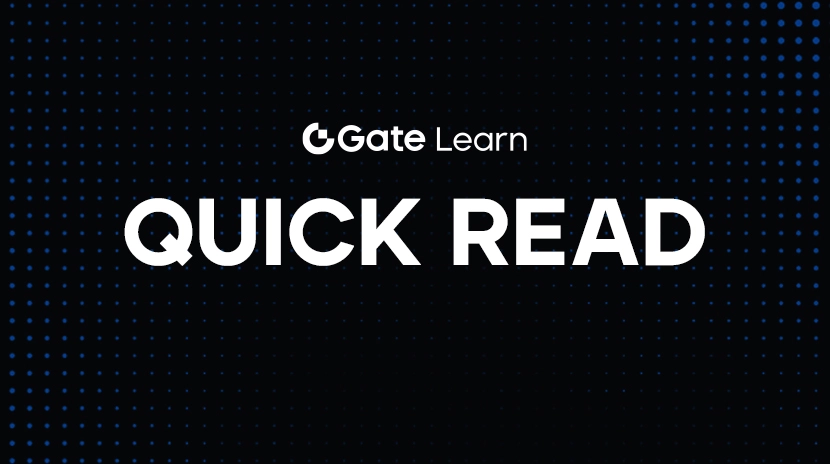
Pi Network (PI) au taux de change du franc CFA d'Afrique de l'Ouest (XOF) : Valeur actuelle et guide de conversion
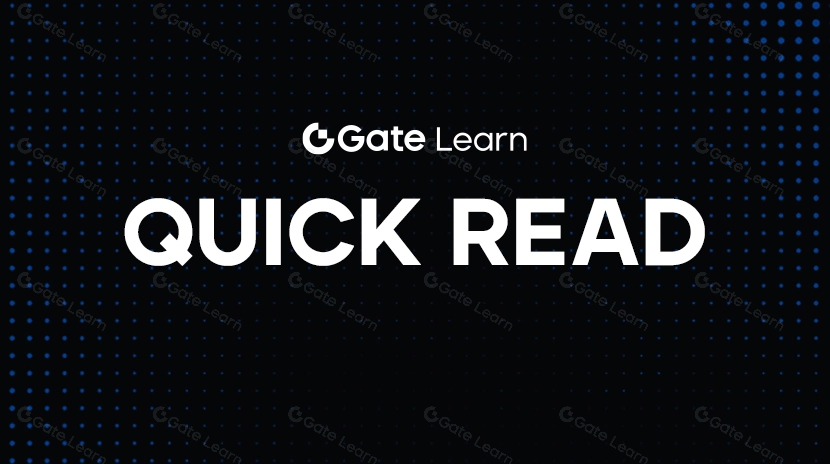
Comment vendre la pièce PI : Guide du débutant
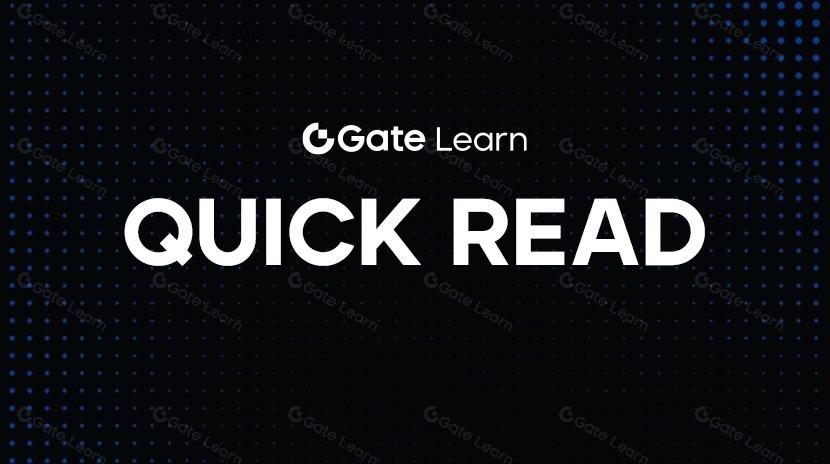
Valeur de Pi Crypto : Lancement sur Mainnet le 20 février 2025 & Prédictions de prix futures
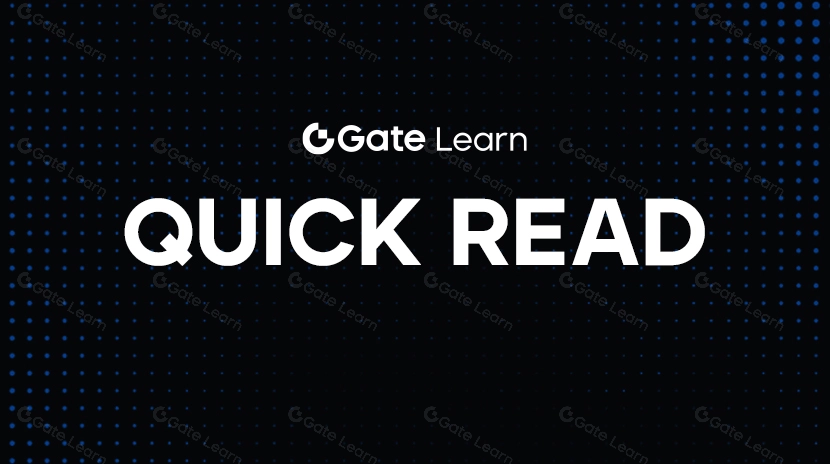
Est-ce que XRP est un bon investissement? Un guide complet sur son potentiel
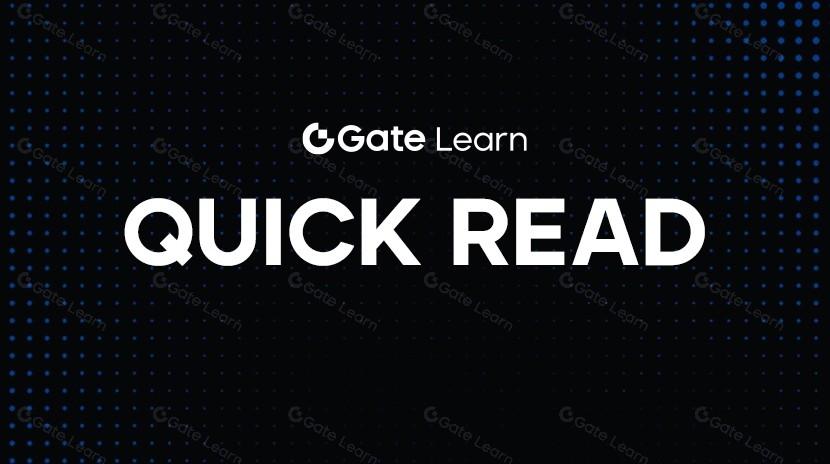
Qu'est-ce que FAFO : jeton MEME dérivé de la plateforme sociale de Trump
